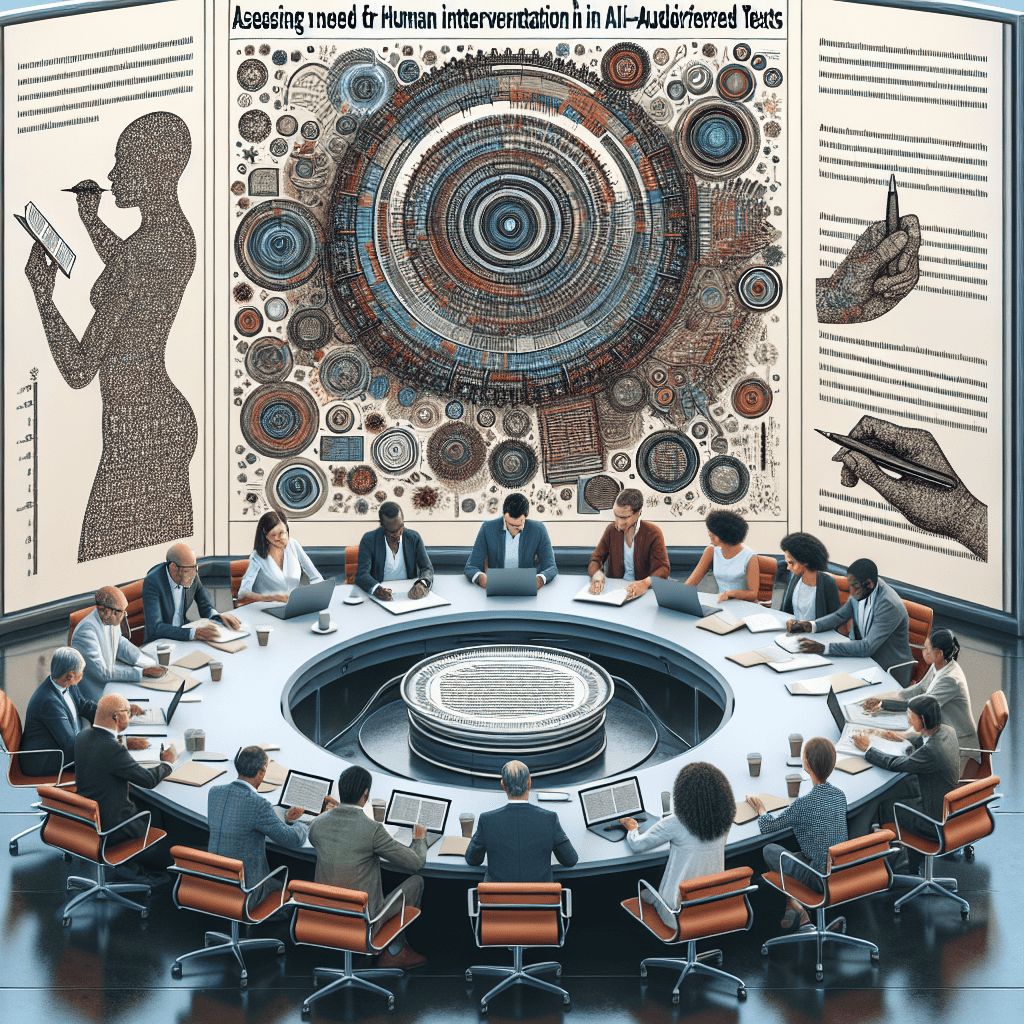Assessing The Need For Human Intervention In AI-Authored Texts
AI-authored texts refer to content created solely through artificial intelligence without human participation in its creation process. With AI’s rise, there has been much discussion around its need for human input into content production – this article explores various factors which come into play when determining this necessity.
AI’s Impact in Text Generating Systems
Artificial intelligence has made great advances in natural language processing, enabling algorithms to produce text that mimics human writing. From chatbots to news articles, AI is now capable of producing all sorts of content without human supervision – an attractive option for businesses seeking to streamline their content production process.
Accuracy and Credibility
A key concern with AI-authored texts is accuracy and credibility of information presented. While AI is capable of quickly creating text, it lacks the capability of fact-checking sources or verifying facts – this can result in false or misleading data being disseminated, harming brand reputation or misinforming readers. Human oversight must ensure AI generated content remains reliable.
Tone and Voice Another crucial consideration when creating AI-generated texts is their tone and voice. AI may struggle with grasping nuances of language or conveying emotions effectively, unlike human writers who bring unique perspectives and creativity that AI may find harder to replicate. Therefore, adding some human elements can help AI content remain consistent in tone and voice that resonates with its target audience.
Considerations of Ethical Considerations
There are also ethical considerations to keep in mind when assessing whether human intervention in AI-authored texts is needed. AI algorithms rely on existing data, which may contain biases and discriminatory language. Without human oversight, AI generated content risks perpetuating harmful stereotypes or creating divisive narratives; human oversight ensures this content adheres to ethical standards and promotes inclusivity.
Context and Relevance AI-generated content may lack the capability of understanding context or relevance in certain scenarios, although it can generate text based on keywords or prompts. While AI may produce text that generates interesting insight or recommendations, human writers have the expertise necessary to assess complex situations and tailor their writing specifically to meet audience needs – pairing AI with human intervention can result in informative yet engaging content creation.
Engagement and Interaction
Human intervention is critical in order to increase engagement and interaction in AI-authored texts, since humans crave genuine interactions and personalized experiences that AI may struggle to replicate on its own. By including human input in AI content creation processes, this tailored content can meet readers’ preferences and interests more directly – leading to stronger relationships and driving meaningful interactions among audiences.
Conclusion
Assessing the need for human intervention in AI-authored texts requires taking an analytical and nuanced approach that considers factors like accuracy, tone, ethics, relevance and engagement. Though AI has revolutionized content creation, human involvement remains integral in assuring its quality and authenticity – by pairing AI’s strengths with human creativity and empathy we can produce content that both impacts and resonates.
As technology evolves, AI and human writers will play an increasingly crucial role in shaping the future of content creation. Striking an ideal balance between automation and human intervention is vital in producing engaging material that resonates with audiences while providing value to readers; ultimately it’s this synergy between AI and human creativity which will drive innovation and drive growth within content production industries.
